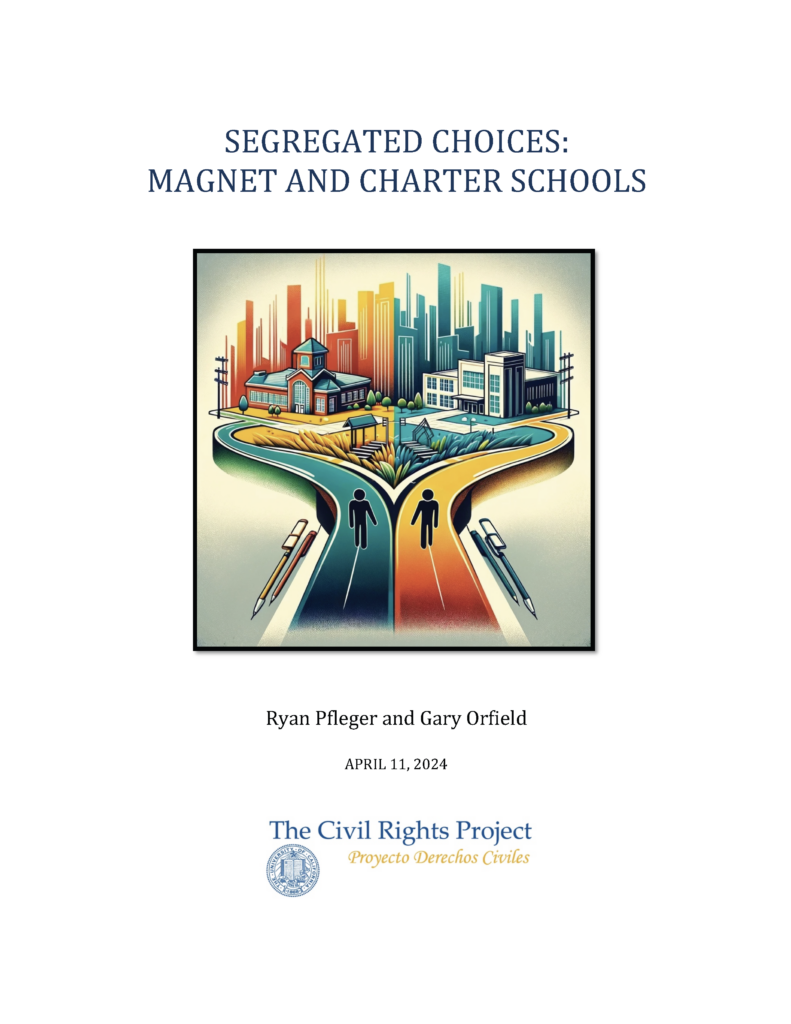Executive Summary
Comparing charter and magnet schools is important, yet complex. Different cities have different demographics and legal and educational histories. Some have a significant presence of only one of the two types, among other differences. This analysis describes levels of diversity in a comparable subset of schools to enable policy-relevant comparisons between charter and magnet schools. We examine schools in districts that had at least five charter schools and five magnet schools in any year since 2000. This selection includes most of the 100 largest school districts since both types of schools developed mostly in large urban districts. This sample is especially relevant to choice policies because it allows comparisons in the same districts where both types of school choice have been tried at a significant level. This study describes the level of segregation in recent decades in large districts which had a significant presence of schools of both types.
The new data on school segregation produced for this report supports the following major findings:
- Charter schools grew rapidly in the last 20 years with enrollment eventually surpassing magnets schools by more than 1 million students in recent years. Charter school enrollment grew especially fast: up approximately 900% since 2001.
- In 2021, magnet schools were less segregated than comparable charter schools along multiple measures. The average Black student in a magnet school was in a school that was 15% white compared to charter schools where the average black student was in a school that was only 8% white. Over the last 20 years, Latino to white exposure increased in magnets and decreased in charter schools.
- The charter sector had a higher proportion of intensely segregated schools than the magnet sector, and the gap between the two sectors increased over time. The proportion of intensely segregated charter schools, with less than 10% white students, increased from 45% to 59% from 2000 to 2021. A different trend was observed for magnets. The share of magnets that were intensely segregated was nearly the same in 2000 and 2021: 34% and 36%.
In the school districts where both forms of choice were tried, magnets have done better than charters at modestly integrating students. An obvious explanation for this is that a basic mission of magnets, especially initially, was to address racial isolation. Policymakers interested in gaining the benefits of integration through choice might look closely at magnet schools. Nonetheless, magnet schools are not the only, or even the best, ways to produce substantial integration. The kinds of integration plans that increased integration substantially in the 1960s and 1970s did not primarily involve magnets. The higher segregation in charter schools observed in this analysis, coupled with other studies with similar findings, suggests that reforming charter schools, if not advancing alternatives like magnet schools or something even more powerful, is needed to address segregation and its well-documented harms.
In compliance with the UC Open Access Policy, this report has been made available on eScholarship:
